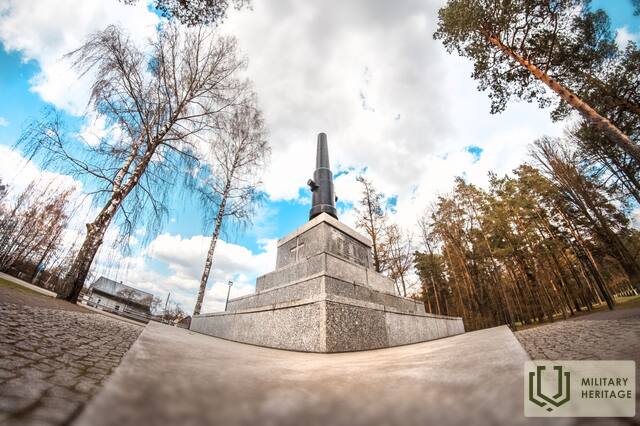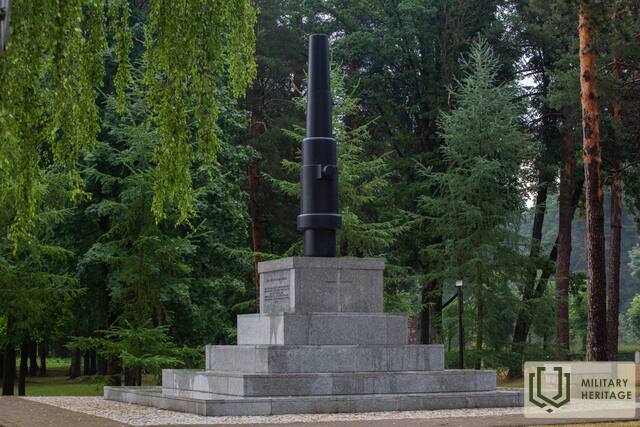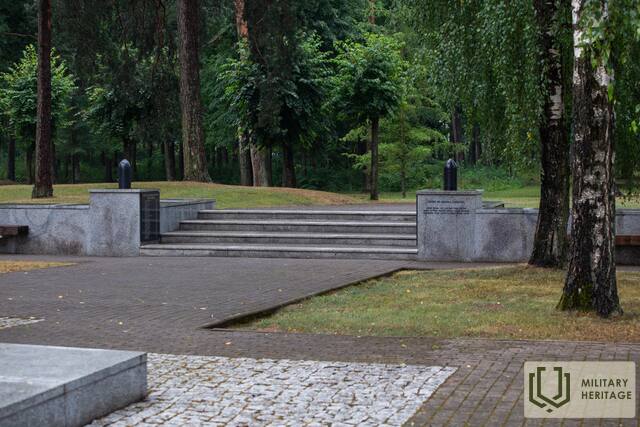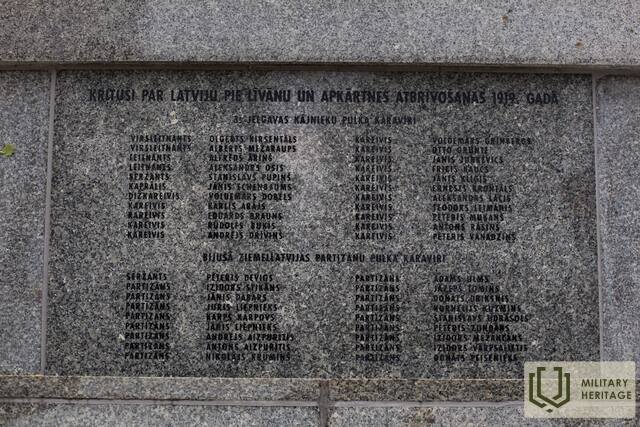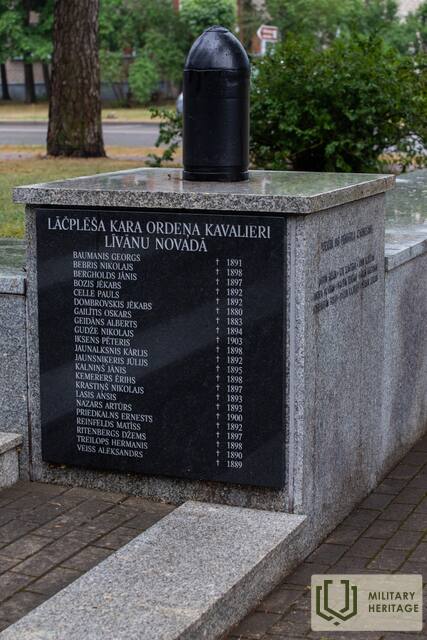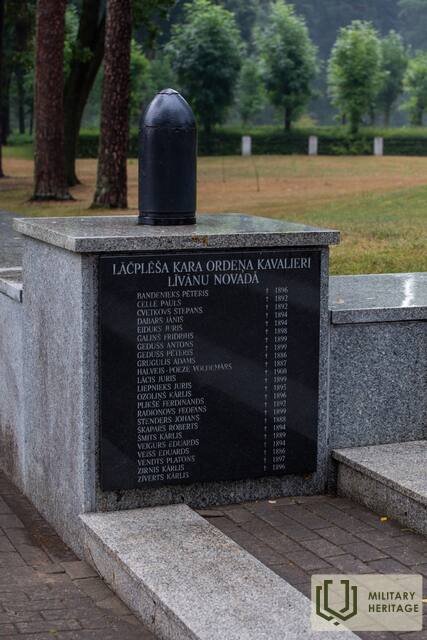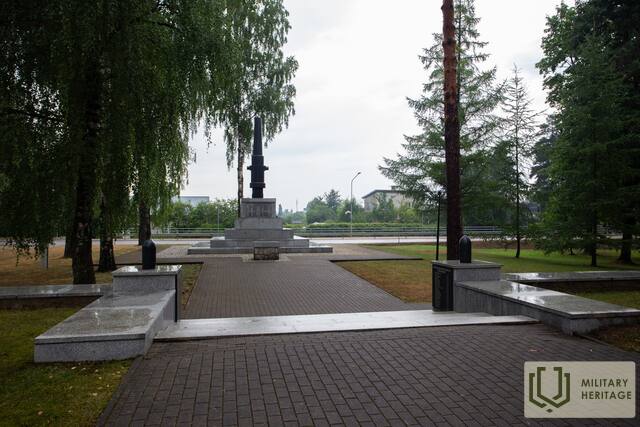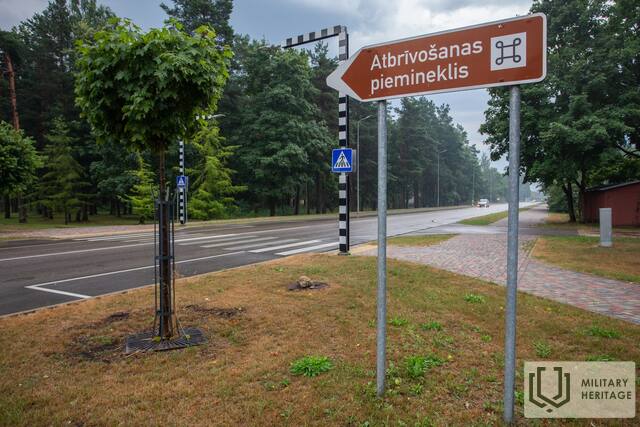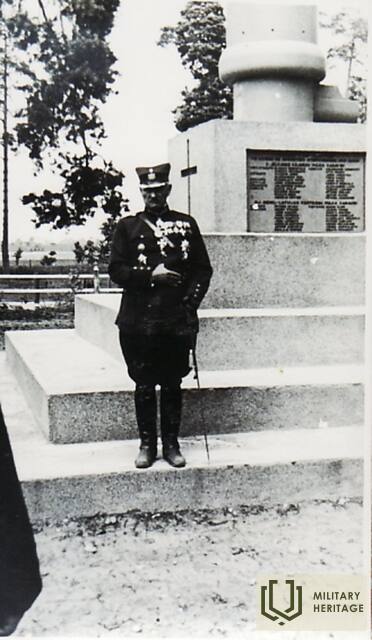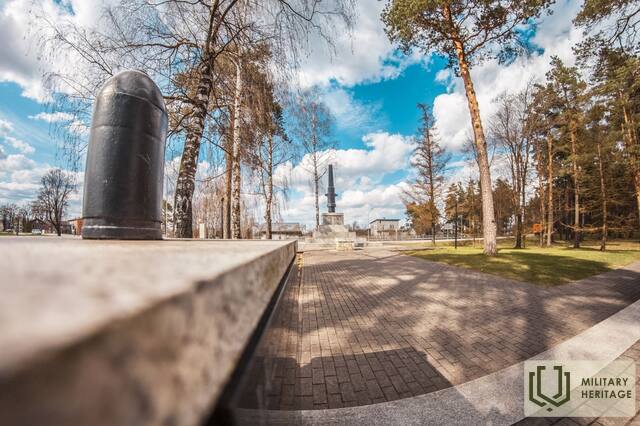Livani Liberation Monument Memorial site

The monument is located at the intersection of Fabrikas and Stacijas streets, where it was unveiled on June 9, 1935 by General Rūdolfs Bangerskis, honoring the memory of the soldiers who fell in the battles for the liberation of Līvāni in 1919.
Its main element is a 15-ton, vertically placed cannon barrel. In 1958, the Soviet government dismantled the symbol of freedom in Līvāni, cutting the cannon barrel into scrap metal. The residents preserved the cannonballs throughout the Soviet years, and they returned to their previous location after half a century. The idea of restoring the monument was alive among the people all these years. The Līvāni County Council, together with the residents, actively worked on the restoration of the monument. Donations were collected from the people, and on October 3, 2004, the restored Līvāni Liberation Monument was unveiled in its historical place in the city park.
Inscription on the monument: “Soldiers of the Jelgava Infantry Regiment who fell for Latvia near Līvāni and the liberation of the surrounding area in 1919. Soldiers of the former Northern Latvian Partisan Regiment.”
The names of soldiers and partisans follow.
Memorial plaques for the cavaliers of the Lāčplēsis War Order in Līvāni district have been installed nearby.
The author of the monument's design was architect Pāvils Dreimanis.
October 3–5, 1919. Battle of Līvāni
On October 3, 1919, the Bolsheviks received a strong blow on the front near Līvāni. Units of the 3rd Jelgava and 4th Valmiera Infantry Regiments, as well as units of the Latvian German Landeswehr (former Landeswehr), participated in the attack on Līvāni. With artillery support, units of the 3rd Jelgava Infantry Regiment moved across the Daugava. After the successful move, the battle for Līvāni began, which lasted all day long. At around 17:30, Līvāni station was captured, and an hour later the bridges over the Dubna River were crossed. The combined forces managed to drive the Bolsheviks out of Līvāni, and by 19:00 the city was completely liberated. On October 5, 1919, the Bolsheviks tried to regain Līvāni by attacking the new positions of the 3rd Jelgava and 4th Valmiera Infantry Regiments. The Latvians held the occupied positions with difficulty. This was the first serious and successful attack on the Eastern Front between July and October 1919.
While at the Līvāni Liberation Monument, you can scan the QR code and listen to an audio story about the history of the monument. The story is also available on the IziTravel platform HERE . The story is available in Latvian and English.
Used sources and references:
www.visitlivani.lv/lv/ko-darit/kulturvesture/livanu-atbrivosanas-piemineklis
www.mil.lv/lv/latvijas-neatkaribas-kars




